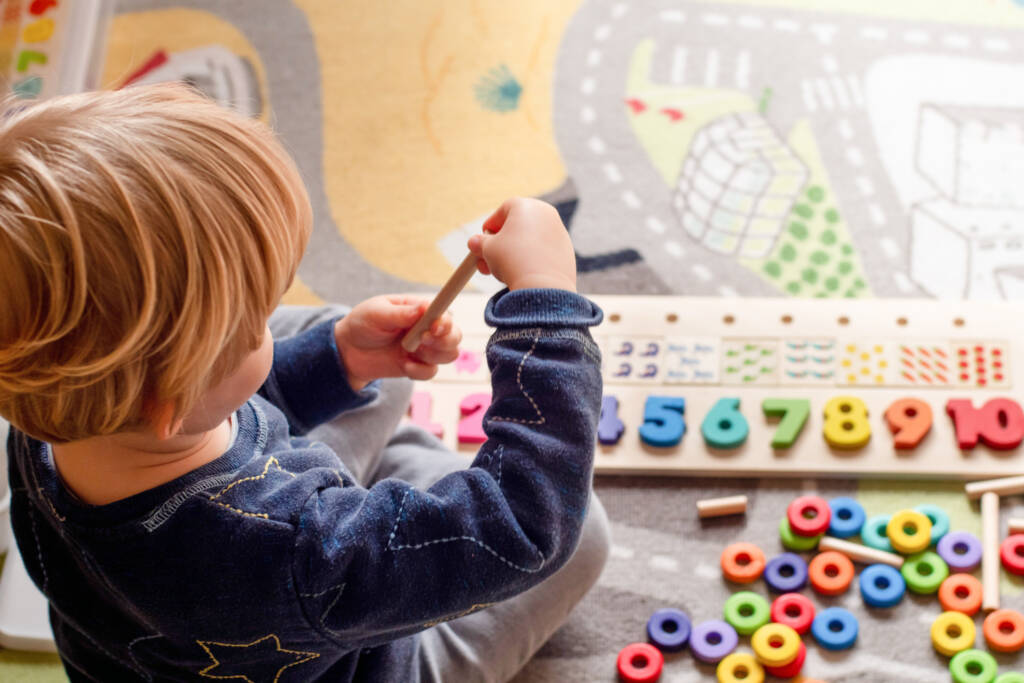
Child Development

In this course, students will learn about childcare development and the caring of children. Students who work as a babysitter, a camp counselor, or at a daycare would benefit from the material presented. Topics covered include prenatal development through pre-adolescence, and the physical, emotional, intellectual, and social development is covered. Also included is a module on health and safety issues.
Major Topics and Concepts
Module 1
Prenatal Development
1. Describe development that occurs during each stage of pregnancy.
2. Discuss causes, diagnosis, and prevention of birth defects.
3. Identify alcohol, drug, environmental hazards and genetic factors that can adversely
affect prenatal development.
The Newborn
1. Describe the three stages of labor.
2. Describe the physical changes that take place immediately after birth.
3. Identify the ways in which newborns are different from older babies.
Module 2
Physical Development During the First Year
1. Explain the difference between “growth” and “development.”
2. Identify motor skills that develop during a baby’s first year.
3. Identify important milestones of growth and physical development during a baby’s first year.
4. Explain shaken baby syndrome and identify ways to prevent it.
Emotional, Social, and Intellectual Development During the First Year
1. Distinguish between emotional, social, and intellectual development.
2. Explain how infants develop emotionally, socially, and intellectually.
3. Describe the ideas of Jean Piaget and his stages of learning.
4. Explain how caregivers can provide learning opportunities for infants.
5. Choose toys appropriate for infants.
Module 3
Physical Development from Ages 1 to 3
1. Describe changes in height, weight, posture, and proportion that occur during these ages.
2. Distinguish between small and large motor skills.
3. Identify proper nutrition during these ages.
4. Describe sleeping patterns during these ages.
5. Explain when a child is ready to begin toilet training.
Emotional, Social, and Intellectual Development from Ages 1 to 3
1. Describe general patterns of emotional and social development during the toddler years.
2. Relate how young children gradually learn to play with each other.
3. Explain the seven basic intellectual activities.
4. Describe how children develop speech.
5. Describe the methods of learning.
Module 4
Physical Development from Ages 4 to 6
1. Describe normal physical growth for four- to six-year-olds.
2. Compare motor skill development of four-, five-, and six-year-olds.
3. Explain how children develop good self-care habits.
4. Identify why it is important for children to have good nutrition and healthy eating habits.
Emotional, Social, and Intellectual Development from Ages 4 to 6
1. Describe general patterns of emotional and social development of children ages four to six.
2. Describe a child’s relationship to other family members in these ages.
3. Explain how children develop a sense of right and wrong.
4. Discuss appropriate ways for dealing with misbehavior.
5. Describe the characteristics of intellectual and speech development of children aged four to six.
Module 5
Physical Development from Ages 7 to 12
1. Describe physical growth that occurs between the ages of 7 and 12.
2. Explain how physical changes affect personal hygiene requirements.
3. Discuss basic steps of personal hygiene and why they are necessary.
4. Demonstrate understanding of the nutritional needs of children between the ages of 7 and 12
5. Identify the changes of puberty in boys and girls.
Emotional, Social, and Intellectual Development from Ages 7 to 12
1. Identify stages of emotional development for ages 7 to 12
2. Explain the growing influence of peer pressure and what parents can do to encourage moral decisions in their children
3. Identify the characteristics of concrete and formal thinking and be able to give examples of each.
Module 6
Staying Healthy and Safe
1. Identify safety risks related to the different developmental stages.
2. Demonstrate knowledge of common household substances that can be poisonous.
3. Define “pathogen” and “immunity.”
4. Explain how to reduce the health risks of pathogens.
First Aid for Caregivers
1. Explain when first aid is appropriate for common emergencies and when professional medical help is needed.
2. Identify the first aid treatments for common emergencies such as allergic reactions, asthma attacks, burns, loss of consciousness, and poisoning.
3. Describe the qualities of a responsible babysitter or child-care worker.
Competencies
Prenatal and Newborn Development
Students will demonstrate an understanding of prenatal and newborn development by describing development during pregnancy, explaining the hazards affecting prenatal development, and describing physical changes after birth.
Development During the First Year
Students will demonstrate an understanding of development during the first year by explaining types of development, describing first-year milestones, and explaining infant safety.
Development from Ages 1 to 3
Students will demonstrate an understanding of development from ages 1 to 3 by describing physical development in toddlers, explaining healthy development in toddlers, and describing social-emotional development in toddlers.
Development from Ages 4 to 6
Students will demonstrate an understanding of development from ages 4 to 6 by describing physical development in young children, explaining healthy habits in young children, and describing social-emotional development in young children.
Development from Ages 7 to 12
Students will demonstrate an understanding of development from ages 7 to 12 by describing physical development in older children, explaining health and hygiene in older children, and describing social-emotional development in older children.
Childhood Healthy and Safety
Students will demonstrate an understanding of childhood health and safety by explaining safety risks for children, explaining first aid treatments for children, and describing the qualities of responsible childcare providers.

